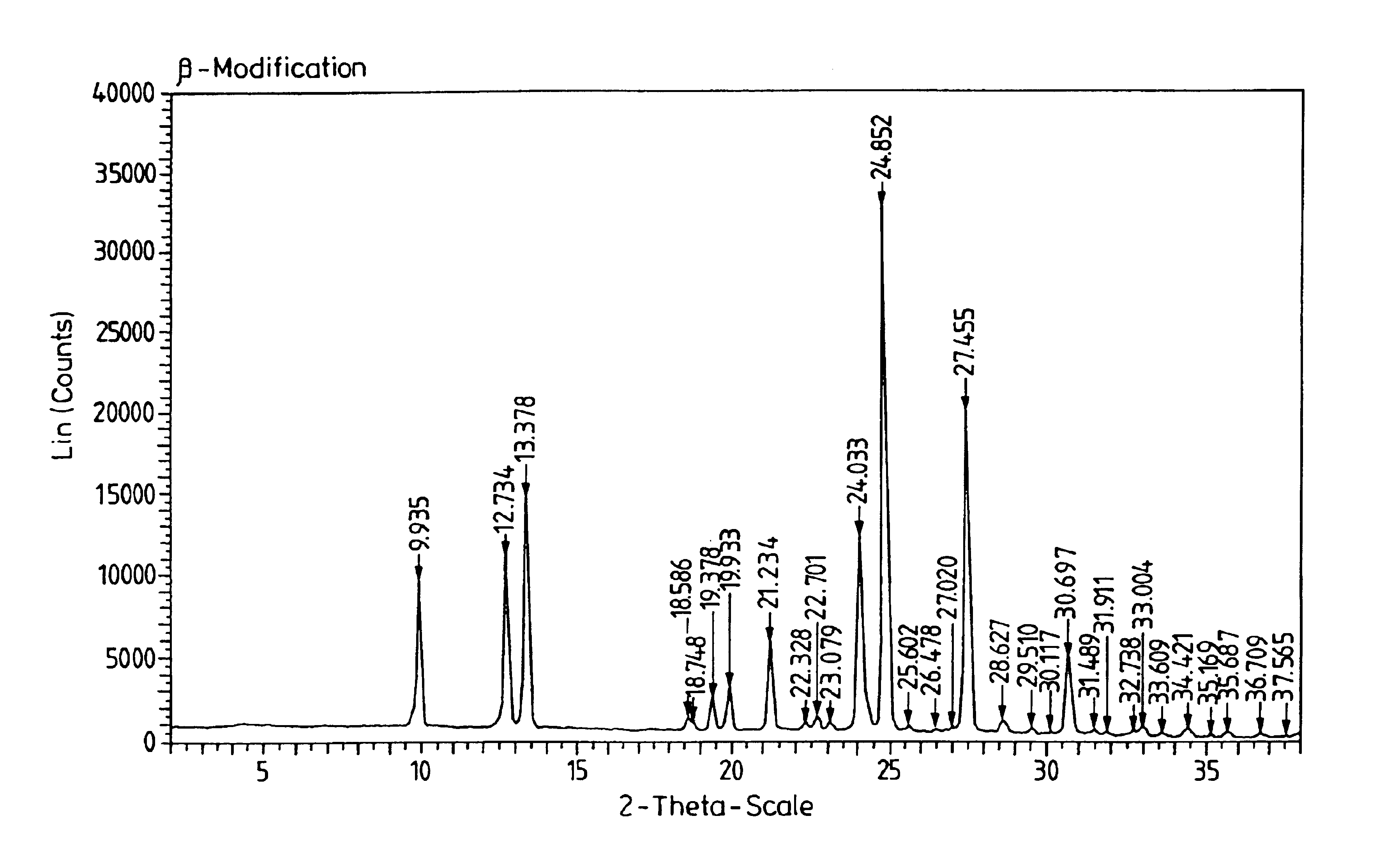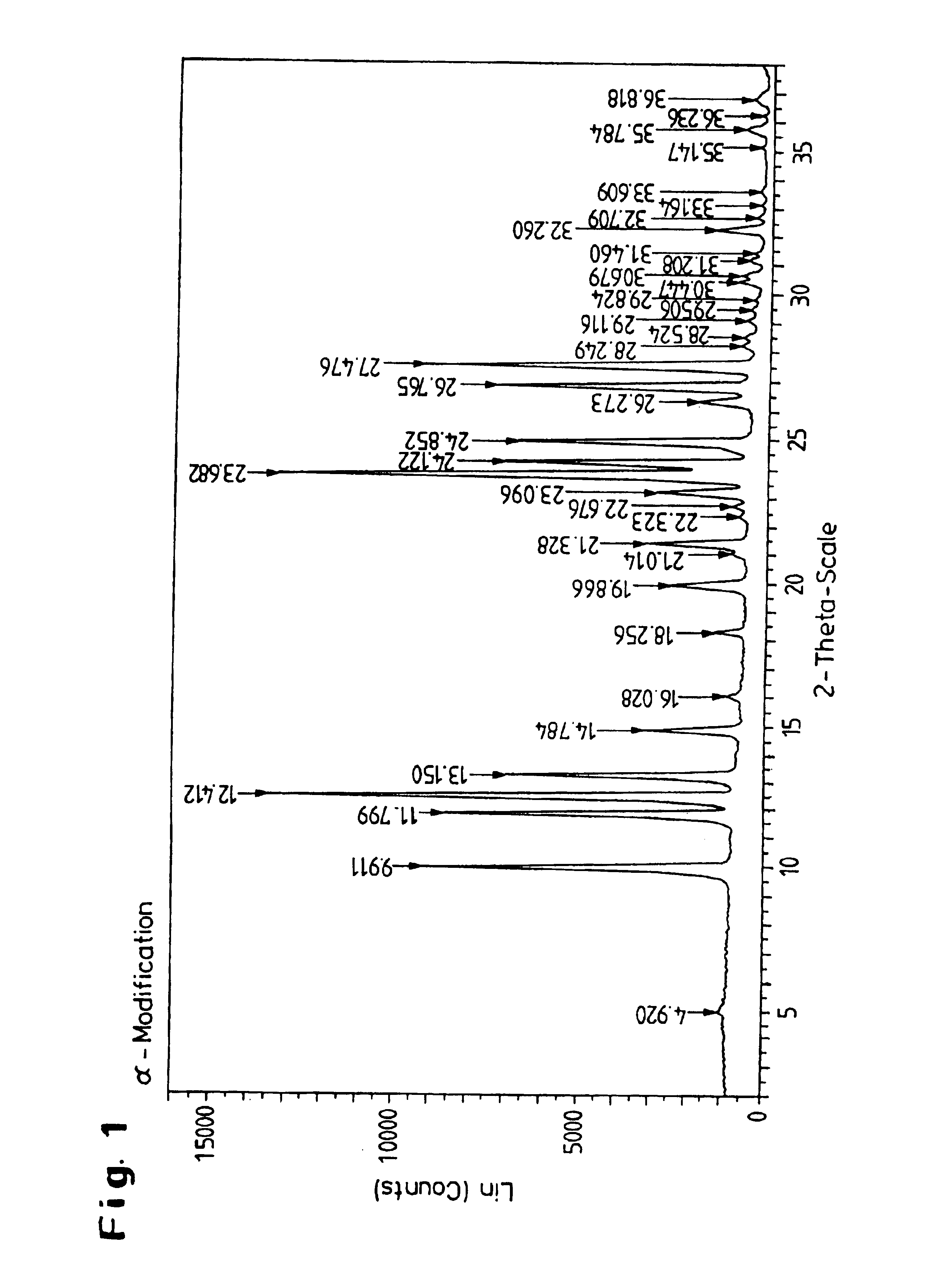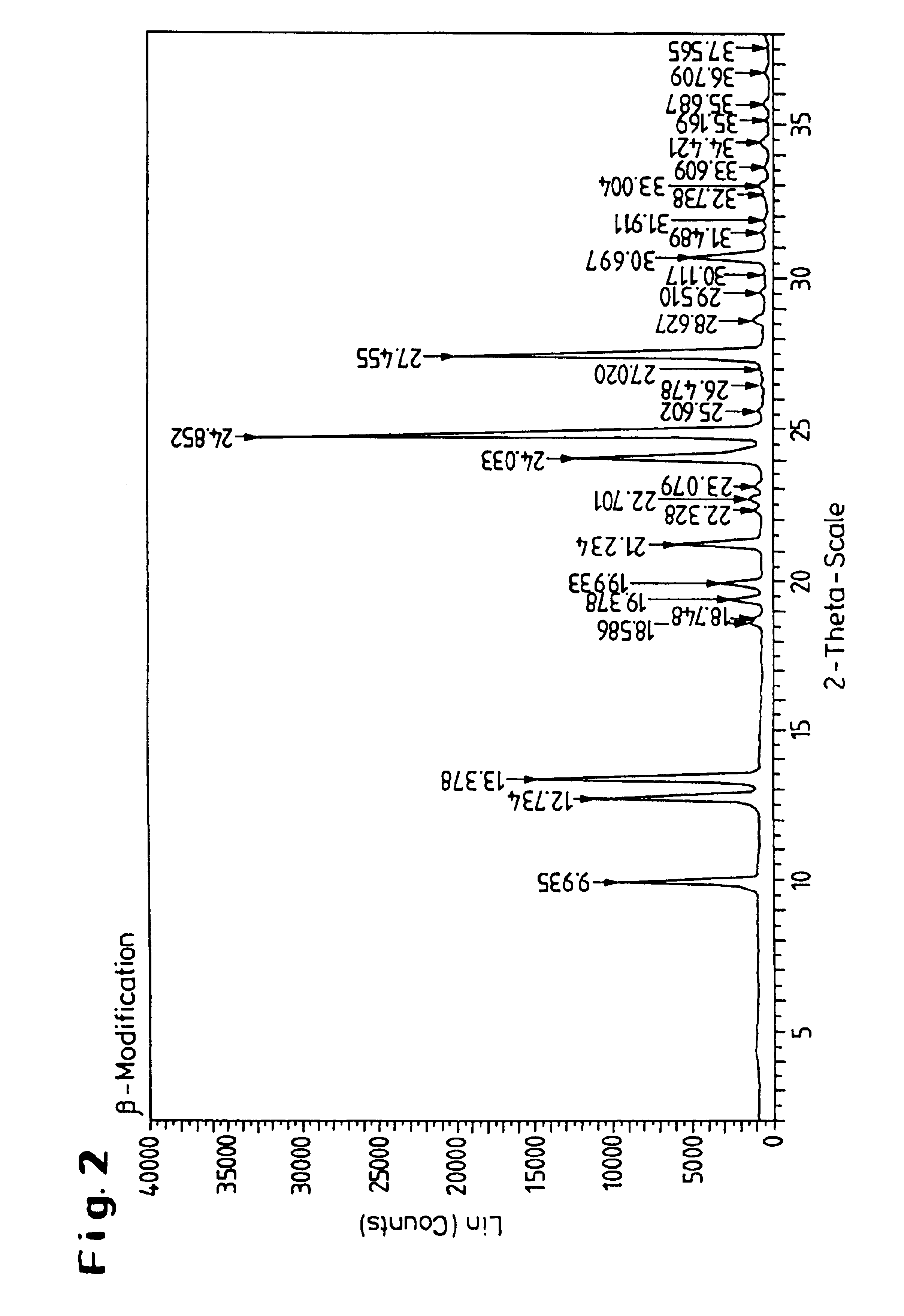Crystal form of a perinone dye
a perinone dye and crystal form technology, applied in the field of perinone dye crystal form, can solve the problems of low bulk density of known dye in powder form, easy dusting, uneconomical production of granular or pulverulent products by spray drying of aqueous slurry,
- Summary
- Abstract
- Description
- Claims
- Application Information
AI Technical Summary
Problems solved by technology
Method used
Image
Examples
##ventive example 1
Inventive Example 1
To a mixture of 340 parts of N-methylpyrrolidone, 6 parts of toluenesulphonic acid, 3 parts of trimellitic anhydride and 100 parts of phthalic anhydride were added dropwise at 145° C. a solution of 110 parts of N-methylpyrrolidone and 89 parts of 1,8-diaminonaphthalene over 4 hours.
Afterwards the batch was stirred at 145° C. for 2 hours, cooled down to room temperature and filtered with suction. The filter residue was then washed with 125 parts of N-methylpyrrolidone and 500 parts of hot water and dried at 80° C. under reduced pressure.
This provided 133 parts of the dye of the formula (I) in the β-form having the crystal form described in FIG. 2.
##ventive example 2
Inventive Example 2
To a mixture of 340 parts of N-methylpyrrolidone (NMP), 6 parts of toluenesulphonic acid and 100 parts of phthalic anhydride was added dropwise at 145° C. a solution of 110 parts of N-methylpyrrolidone and 89 parts of 1,8-diaminonaphthalene over 4 hours.
Afterwards the batch was stirred at 145° C. for 2 hours, cooled down to room temperature and filtered with suction. The filter residue was then washed with 125 parts of N-methylpyrrolidone and 500 parts of hot water and dried at 80° C. under reduced pressure.
This provided 132 parts of the dye of the formula (I) in the α-form having the crystal form described in FIG. 1.
##ventive example 3
Inventive Example 3
130 parts of the dye of the formula I in the α-form (prepared according to Comparative Example 1) and 4 parts of the condensation product of trimellitic acid and 1,8-diaminonaphthalene (formula II) were introduced into 350 parts of NMP and heated to 145° C. The batch was then cooled down to 20° C. over 6 hours, subsequently stirred at 20° C. for 1 hour and filtered. The filter cake was washed with 100 parts of methanol and then with 500 parts of water. Drying at 80° C. under reduced pressure resulted in 124.6 parts of the dye of the formula I in the β-form having the crystal form described in FIG. 2.
Property Profiles
A comparison of the properties of the dye of the formula (I) in the α-form according to Comparative Example 1 or 2 and the β-form according to either of Inventive Examples 1 and 3 presents the following table.
α-formβ-formBulk density in g / cm30.160.29Filtration to isolate thegoodvery gooddye from the reaction(even withoutmixtureapplication of reducedpre...
PUM
| Property | Measurement | Unit |
|---|---|---|
| temperature | aaaaa | aaaaa |
| diffraction angles | aaaaa | aaaaa |
| weight | aaaaa | aaaaa |
Abstract
Description
Claims
Application Information
 Login to View More
Login to View More - R&D
- Intellectual Property
- Life Sciences
- Materials
- Tech Scout
- Unparalleled Data Quality
- Higher Quality Content
- 60% Fewer Hallucinations
Browse by: Latest US Patents, China's latest patents, Technical Efficacy Thesaurus, Application Domain, Technology Topic, Popular Technical Reports.
© 2025 PatSnap. All rights reserved.Legal|Privacy policy|Modern Slavery Act Transparency Statement|Sitemap|About US| Contact US: help@patsnap.com



